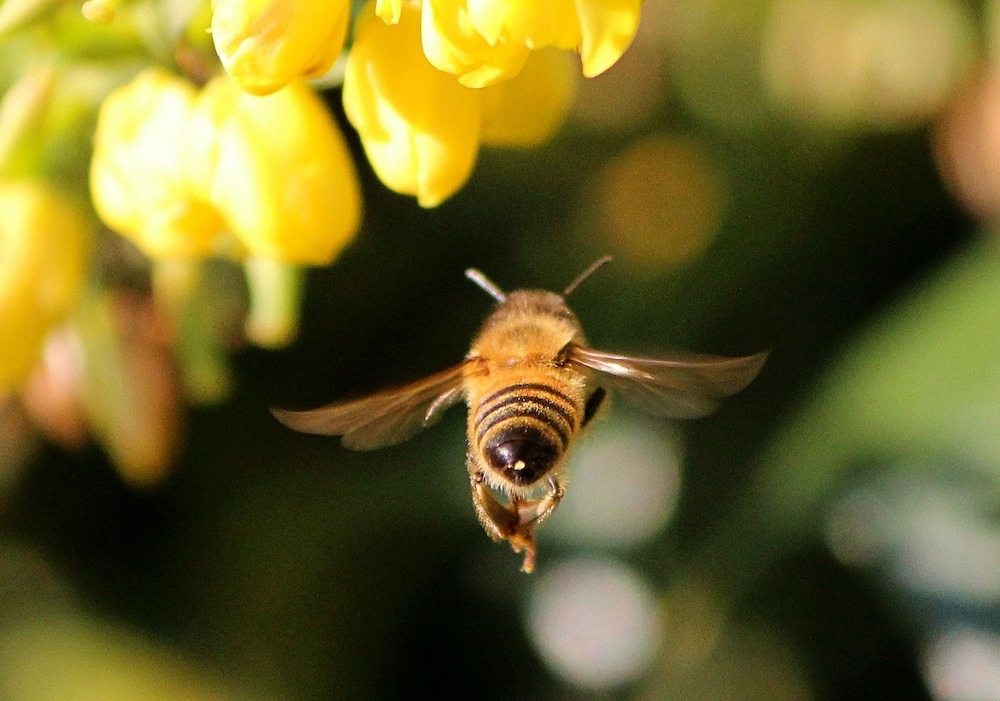Tips for Preventing Honey Bee Stings

Bee stings are not pleasant. And even though the pain of a bee sting doesn’t last long, it is certainly something that you want to avoid. With a little knowledge and preparation, you can take steps to prevent bee stings from happening in the first place.
Wear shoes when walking in grass.
While you might not suspect it, grassy areas can be full of bees! Some species of bees nest in the ground. Other honey bees may be foraging on the flowering clovers and dandelions. If you are going to be walking in your yard or in a park barefoot, you run the risk of stepping on a bee. A bee that senses danger may become aggravated and sting. Be sure to wear shoes or other foot coverings to protect your feet when walking in grassy areas.
Don’t aggravate hives.
This should go without saying, but if you mess with a honey bee hive, they may decide to mess with you. In general, honey bees are docile and do not sting unless they’ve been aggravated. Avoid swatting, spraying or otherwise aggravating bee hives. This action will surely rile up the bees and may encourage them to attack you. If you see a bee hive or swarm, it is best to leave them alone. If the bees are in an inconvenient or dangerous location, call your local live bee removal experts.
Protect your outdoor picnics.
Backyard barbecues and idyllic picnics in the park can be a lot of fun, but they can also attract honey bees. Foods and sugary beverages can be like a magnet to honey bees who are actively foraging for nectar. If you will be eating outdoors, be sure to bring coverings for your food containers. Do not leave your open soda cans unattended. Bees and wasps have been known to enter cans and cause quite a surprise as you go in for a sip.
Be a tidy eater.
Bees and wasps will be attracted to food when you are eating outdoors. In addition to covering your food, you want to avoid sticky fingers and clothing. Children, in particular, can cause quite a mess while eating. Be sure to wipe their hands, face and change their clothing so that the food-smells do not attract bees.
Stay calm, cool and collected.
If you do come across a honey bee or a number of honey bees, don’t panic. Stay calm and move away slowly. Swatting at the bees or flailing your arms will only aggravate the bees and make it more likely that they will sting you.
What to Do If You Get Stung
Unfortunately, it does happen. No matter how careful you are being, you can still get stung by a honey bee. For most people, a honey bee sting is moderately painful. However, that bad sensation usually only lasts for a few minutes. Bee stings are also accompanied by some redness, swelling and itchiness.
Apply ice to the area to reduce swelling and sensations of pain. Monitor the area after the sting to ensure that you are not having any kind of allergic reaction. Some people are allergic to bee venom and can have a very adverse reaction that requires medical attention. If you notice extreme swelling, pain, fever or vomiting, it is best to seek medical attention immediately.
How to Handle a Bee Hive or Swarm
Honey bees need to be protected. If you encounter bees, do not try to swat or kill them. Bee hives in your home can be frustrating and dangerous. Even so, it is best to leave it up to professionals to take care of your bee situation safely and humanely.
At D-Tek Live Bee Removal, we work with San Diego area home and business owners who have a troublesome bee hive or swarm on their property. We use a specialized vacuum system to ensure that honey bees are removed from your premises safely and humanely. The bees are then rehomed so that they can continue to thrive under the care of a local beekeeper.
If you are concerned about a bee hive that has taken up residence in the walls of your home, your attic or your garage, don’t panic! Call the bee removal experts at D-Tek Live Bee Removal today. We are the trusted source for safe and humane San Diego bee removal. Contact our team today for your inspection and quote for service.
